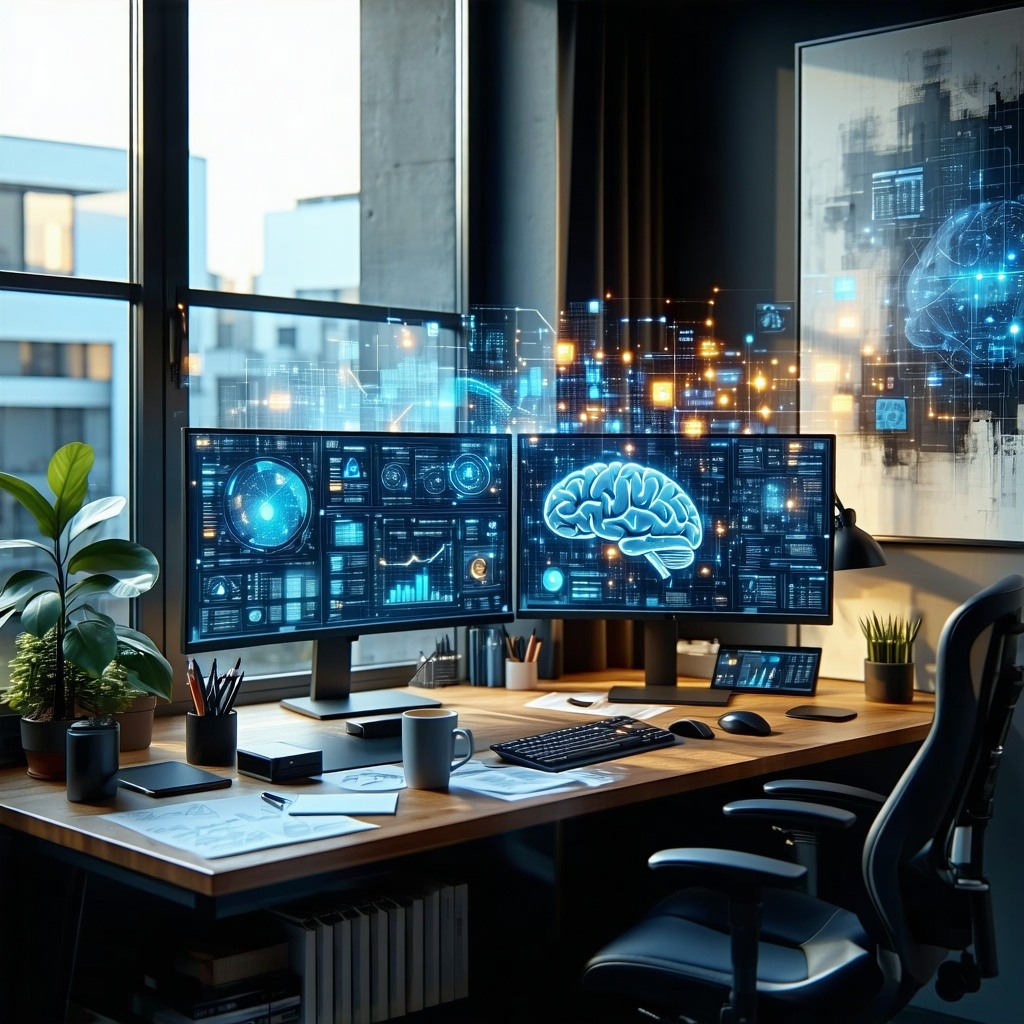AI vs. Traditional Advertising Agencies: The Battle for Success
Discover the ongoing battle between AI and traditional advertising agencies, and why adaptation is key for survival.
The Rise of AI in Advertising
In recent years, the rise of artificial intelligence (AI) has revolutionized the advertising industry. AI bots, equipped with advanced algorithms and machine learning capabilities, are gradually replacing traditional advertising agencies in various aspects of the marketing process. These intelligent bots are capable of analyzing vast amounts of data, identifying trends and patterns, and executing targeted advertising campaigns with unprecedented precision and efficiency.
AI in advertising offers numerous benefits, such as enhanced targeting capabilities, real-time data analysis, and automated campaign optimization. By leveraging AI, businesses can reach their target audience more effectively, deliver personalized messages, and maximize their return on investment. Additionally, AI bots can work 24/7, ensuring continuous monitoring and optimization of advertising campaigns, which is a significant advantage over human-operated agencies.
However, despite the undeniable advantages, AI in advertising also has its limitations. While AI bots excel at data analysis and automation, they may lack the creativity and human touch that traditional advertising agencies bring to the table. Advertising is not just about targeting the right audience and delivering messages; it is an art that requires emotional connection, storytelling, and understanding of human behavior. These qualities are often difficult to replicate through AI alone.
Benefits and Limitations of AI in Advertising
The benefits of AI in advertising are manifold. Firstly, AI bots can analyze vast amounts of data in real-time, enabling businesses to make data-driven decisions and optimize their advertising campaigns for maximum effectiveness. This leads to better targeting, increased customer engagement, and higher conversion rates. Secondly, AI can automate repetitive tasks, such as ad placement, bidding, and performance monitoring, freeing up human resources to focus on more strategic and creative aspects of advertising.
However, AI in advertising also has its limitations. For instance, AI bots may struggle to understand complex emotions and cultural nuances that play a crucial role in effective advertising. Additionally, AI-based algorithms rely heavily on historical data, which may not always reflect the evolving preferences and behaviors of consumers. Furthermore, AI bots lack the ability to think critically and make subjective judgments, which can limit their ability to adapt to unforeseen circumstances or make creative decisions.
The Unique Value of Traditional Advertising Agencies
Traditional advertising agencies bring a unique value proposition to the table that AI bots cannot fully replicate. These agencies have a deep understanding of consumer psychology, cultural context, and market dynamics. They excel at crafting compelling narratives, creating memorable brand experiences, and driving emotional connections with the target audience. Moreover, traditional agencies foster collaboration and creativity through brainstorming sessions, diverse perspectives, and human intuition, which can lead to breakthrough advertising campaigns that resonate with consumers on a deeper level.
Furthermore, traditional advertising agencies provide a high level of personalized service and strategic guidance to their clients. They build long-term partnerships, understand the specific needs and goals of each business, and tailor their advertising strategies accordingly. This personalized approach, combined with their expertise and experience, sets traditional agencies apart from AI bots and adds significant value to the advertising process.
The Need for Adaptation: Embracing AI in Advertising
While traditional advertising agencies offer unique value, it is crucial for them to adapt and embrace AI tools to stay relevant in today's rapidly evolving digital landscape. AI can augment the capabilities of traditional agencies, empowering them to deliver better results and enhance their competitive edge. By incorporating AI into their processes, agencies can leverage data-driven insights, automate routine tasks, and optimize their advertising strategies for improved performance.
Furthermore, embracing AI can enable traditional agencies to focus more on strategic and creative aspects of advertising. By offloading repetitive tasks to AI bots, agencies can allocate more time and resources to developing innovative campaigns, exploring new channels and formats, and fostering collaboration and creativity. This combination of human expertise and AI-powered capabilities can lead to truly impactful and effective advertising campaigns.
Finding the Balance: The Future of Advertising
The future of advertising lies in finding the right balance between AI and traditional advertising agencies. While AI bots can automate and optimize certain aspects of advertising, the human touch and creative thinking of traditional agencies remain irreplaceable. The key is to leverage AI as a tool to enhance the capabilities of agencies, rather than replacing them entirely.
In this hybrid model, AI can handle data analysis, targeting, and performance monitoring, while traditional agencies focus on crafting compelling narratives, building emotional connections, and delivering unique brand experiences. This collaboration between AI and human creativity can unlock new possibilities in advertising, enabling businesses to reach their target audience in more impactful and meaningful ways.
In conclusion, the battle between AI and traditional advertising agencies is not about one replacing the other, but rather about adaptation and collaboration. Traditional agencies that embrace AI tools and leverage their unique value proposition can thrive in the digital age, delivering exceptional results for their clients and remaining at the forefront of the advertising industry.



